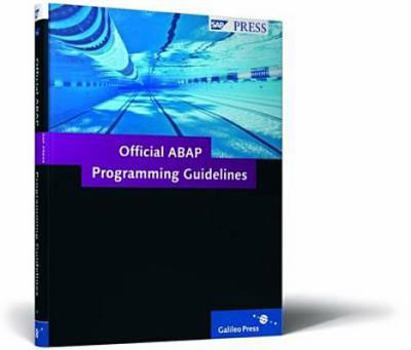Official ABAP Programming Guidelines
How do I select the appropriate program type in SAP programming? Where should the local declarations of a procedure be positioned? Am I supposed to immediately replace all obsolete language elements in existing code? Should I use procedural or object-oriented ABAP (ABAP Objects)? The official ABAP programming guidelines provide clarity and security by answering these questions, and many more that may arise in your daily work
1. General Rules Learn the general principles that you should take into account when you create new programs and classes.
2. Structure and Style Find the answers to your questions on style, including naming, commentation, and structure of programs and procedures.
3. Architecture Explore guidelines on individual aspects of architecture, such as object orientation, error handling, user interfaces, data storage, and much more.
4. Secure and Robust ABAP Ensure your ABAP programs run predictably with no surprises by gaining in-depth knowledge on data types and data objects, calculations and accesses, internal tables, and more.
5. Tips and Hints Explore tips and hints throughout the book, as well as examples of good and bad ABAP programming, to help you adopt effective working techniques and principles.
Highlights:
Basic Rules: Separation of Concerns, Correctness and Quality, Program Type and Attributes, Modern ABAP, Checks for Correctness Structure and Style: Code Formatting and Organization, Naming, Comments, Alternative Notations Architecture: Object Orientation, Error Handling, User Interfaces, Data Storage Secure and Robust ABAP: Data Types and Objects, Calculations and Accesses, System Fields, Internal Tables, Modularization, Dynamic Programming





